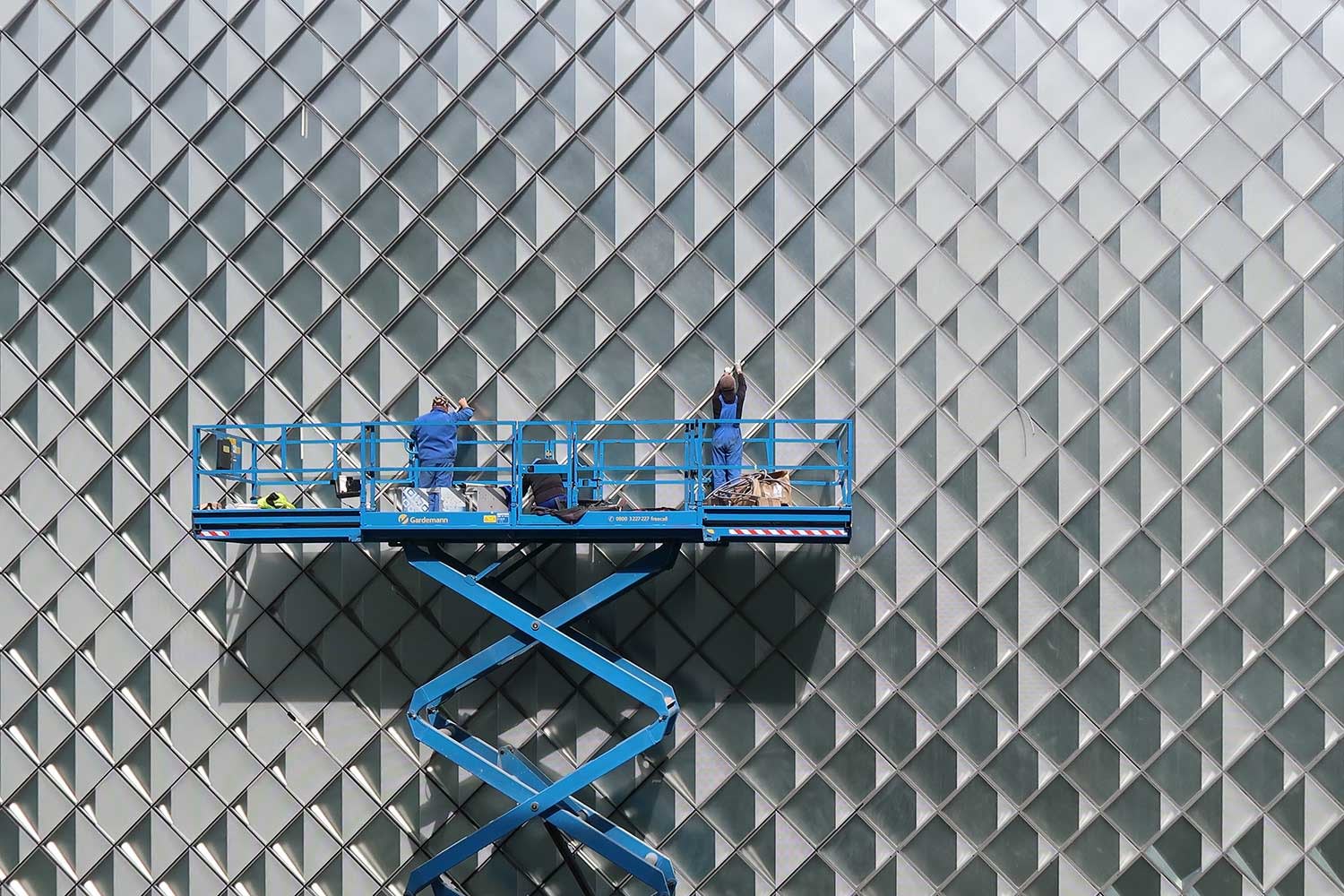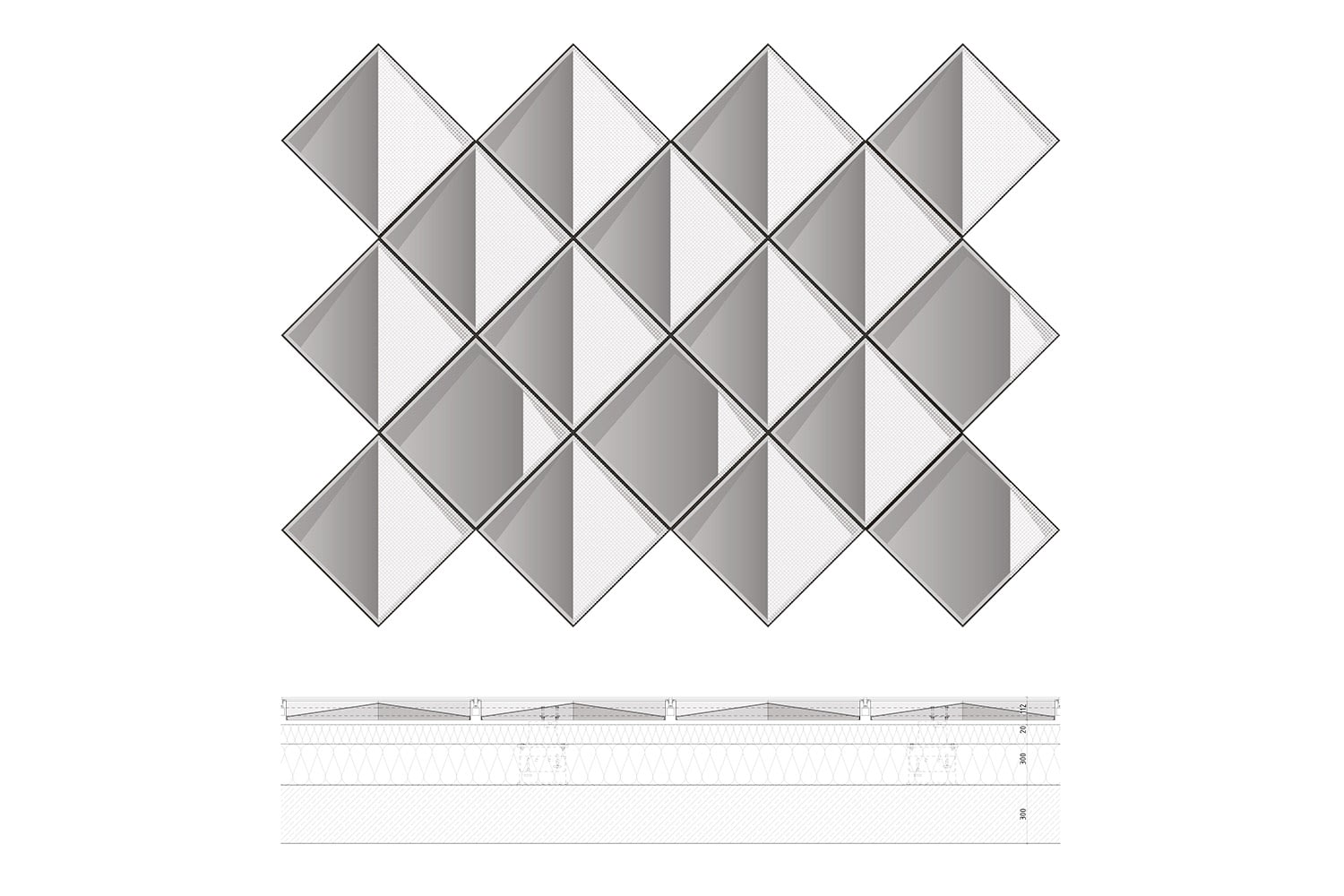Thu 15 Sep
12:10
Richter Musikowski, Berlin
Long Short Stories
The Development of the Futurium Facade – A Long Journey in Short Chapters
The development of the facade is the result of a years-long process. For our presentation within the context of the “Constructive Disobedience” conference we would like to trace and describe the lengthy and laborious journey from the idea to realisation, with all its challenges. We will divide this journey into four chronologically successive chapters:
1. The generation of a code
The first idea for the facade occurred in 2012 in passing while preparing the realisation competition. The leitmotif of a landed cloud mingled with the search for a robust outer skin – sharp-edged yet at the same time soft. An antithesis to the Berlin surroundings with its classical stone facades.
2. The way to the first element
During the first planning phases, various materials were superimposed over each other. Using numerous mock-ups and models, as well as material collages, we reached an approximation of the desired appearance. Ultimately the most convincing arrangement proved to be a combination of two durable materials with an industrial character – cast glass and steel. The multi-layered composition of canted stainless steel sheeting and light-diffusing cast glass lends the facade a visual depth, and generates – depending on the incidence of sunlight, the time of day, and the viewing point – a constantly changing facade apparel.
3. Testing, reproduction and assembly
Further aspects, such as an intelligent bonding, minus visible clamping strips, and a ceramic printing were examined together with the manufacturers and processors. The building authorities ordered that the applications undergo a “stress test”. The finished coffers and their bondings were exposed to UV radiation, rain, heat and frost – in terms of intensity, one laboratory day is the equivalent of one earth year – and the cracks were filmed endoscopically every hour.
The coffers, with an edge length of approximately 70 cm, were prefabricated in the metal manufactory and were then mounted as individual modules on site onto a continuous steel substructure. It was the first time that a structurally bonded glass curtain-wall facade was realised in Germany on this scale and minus any additional mechanical fasteners.
4. Rhombus and mesh – the way to the present
Since then the facade reflects onto the urban surroundings, forming an urban backdrop for the houses and the city. Strollers and media-creators use the facade for their social/media imagery.
“…another mad idea…”
In the end the facade is the result of deliberately experimenting with two materials. The novel aspect is their combination and bonding. This experimental scope was explicitly wanted in the context of the conceptual formulation and the remit of the building as a “House for the Future”. At the same time the experiment had to be completed with the hand-over of the building and operations to the general contractor. The window of opportunity we had to take the gamble was very narrow. Stumbling blocks, like the glass producer going bankrupt, hindered us on the voyage to realisation but didn’t blow us off course. Looking back, we’re grateful for the sheltered moments of dreaming – like those we find in the elaboration of competition entries.

Installation, @ Richter Musikowski

detail and elevation, 1:30
Christoph Richter
Christoph Richter studied architecture at the Technischen Universität Dresden, as well as the UPV Valencia (Spain), and lives and works in Berlin and Halle (Saale).
Jan Musikowski
Jan Musikowski studied architecture at the Bauhaus University Weimar and the Virginia Institute of Technology in Washington DC (USA), and lives and works in Berlin. Following joint roles as academic assistants at the Chair of Housing Construction at the TU Dresden, in 2012 they founded their office together. The trigger for their start of their cooperation was the discovery of a common talent for the formulation of solutions to complex demands to create an exciting architectural narrative. Their first joint project, the design for a competition for the Haus der Zukunft in Berlin, won them first prize. Since then the partnership has resulted in numerous successful competition entries, prizes and awards.